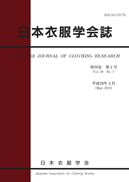Volume 42, Issue 1
Displaying 1-7 of 7 articles from this issue
- |<
- <
- 1
- >
- >|
-
1998 Volume 42 Issue 1 Pages 3-7
Published: 1998
Released on J-STAGE: January 11, 2023
Download PDF (2290K) -
1998 Volume 42 Issue 1 Pages 9-15
Published: 1998
Released on J-STAGE: January 11, 2023
Download PDF (3667K)
Transactions
-
1998 Volume 42 Issue 1 Pages 17-25
Published: 1998
Released on J-STAGE: January 11, 2023
Download PDF (3820K) -
1998 Volume 42 Issue 1 Pages 27-34
Published: 1998
Released on J-STAGE: January 11, 2023
Download PDF (3679K)
Note
-
1998 Volume 42 Issue 1 Pages 35-46
Published: 1998
Released on J-STAGE: January 11, 2023
Download PDF (5783K) -
1998 Volume 42 Issue 1 Pages 47-56
Published: 1998
Released on J-STAGE: January 11, 2023
Download PDF (5094K)
Data
-
1998 Volume 42 Issue 1 Pages 57-62
Published: 1998
Released on J-STAGE: January 11, 2023
Download PDF (3231K)
- |<
- <
- 1
- >
- >|
